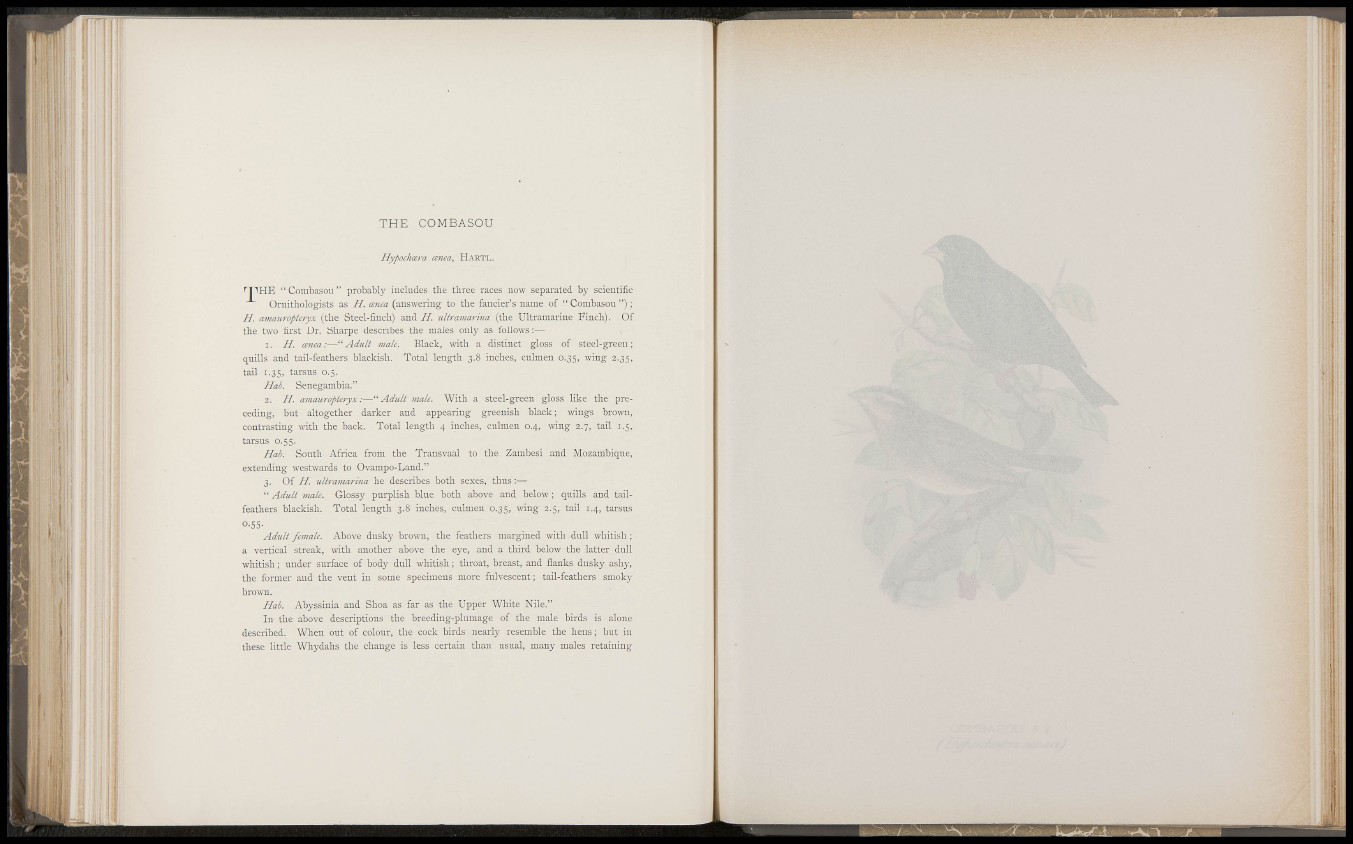
i
Ill]
I
I
,,
; : I:
I I ' 9
rt
11 .
T
. II I
M «,!
; , I I, , .
•f
" I t
,. J
>1
«1 .i:
f i
la
!J
t M : i
' -'t. 'l' l,' .1- t
J
••I!.
; t
T H E COMBASOU
Hypochcera cenea, H A R T L .
''l^HE " Combasou" probably includes the tliree races now separated by scientific
Ornitliologists as H. cenea (answering to tlie fancier's name of " Combasou ") ;
H. amaiiroptcryx (tlie Steel-finch) and H. nltramarina (the Ultramarine Finch). Of
the two first Dr. Sharpe describes the males only as follows :—
1. H. ccnea:—"Adult male. Black, with a distinct gloss of steel-green;
quills and tail-feathers blackish. Total length 3.8 inches, culmen 0.35, wing 2.35,
tail 1.35, tarsus 0.5.
Hab. Senegambia."
2. H. amauropteryx:-Adidt male. With a steel-green gloss like the preceding,
but altogether darker and appearing greenish black; wings brown,
contrasting with the back. Total length 4 inches, culmen 0.4, wing 2.7, tail 1.5,
tarsus 0.55.
Hab. South Africa from the Transvaal to the Zambesi and Mozambique,
extending westwards to Ovampo-Land."
3. Of H. ^dt7'amarina he describes both sexes, thus:—
" Adult male. Glossy purplish blue both above and below; quills and tailfeathers
blackish. Total length 3.8 inches, culmen 0.35, mng 2.5, tail 1.4, tarsus
0-55-
Adult female. Above dusky brown, the feathers margined with dull whitish ;
a vertical streak, with another above the eye, and a third below the latter dull
whitish ; under surface of body dull whitish ; throat, breast, and flanks dusky ashy,
the former and the vent in some specimens more fulvescent; tail-feathers smoky
brown.
Hab. Abyssinia and Shoa as far as the Upper White Nile."
In the above descriptions the breeding-plumage of the male birds is alone
described. When out of colour, the cock birds nearly resemble the hens ; but in
these little Whydahs the change is less certain than usual, many males retaining
m Mf